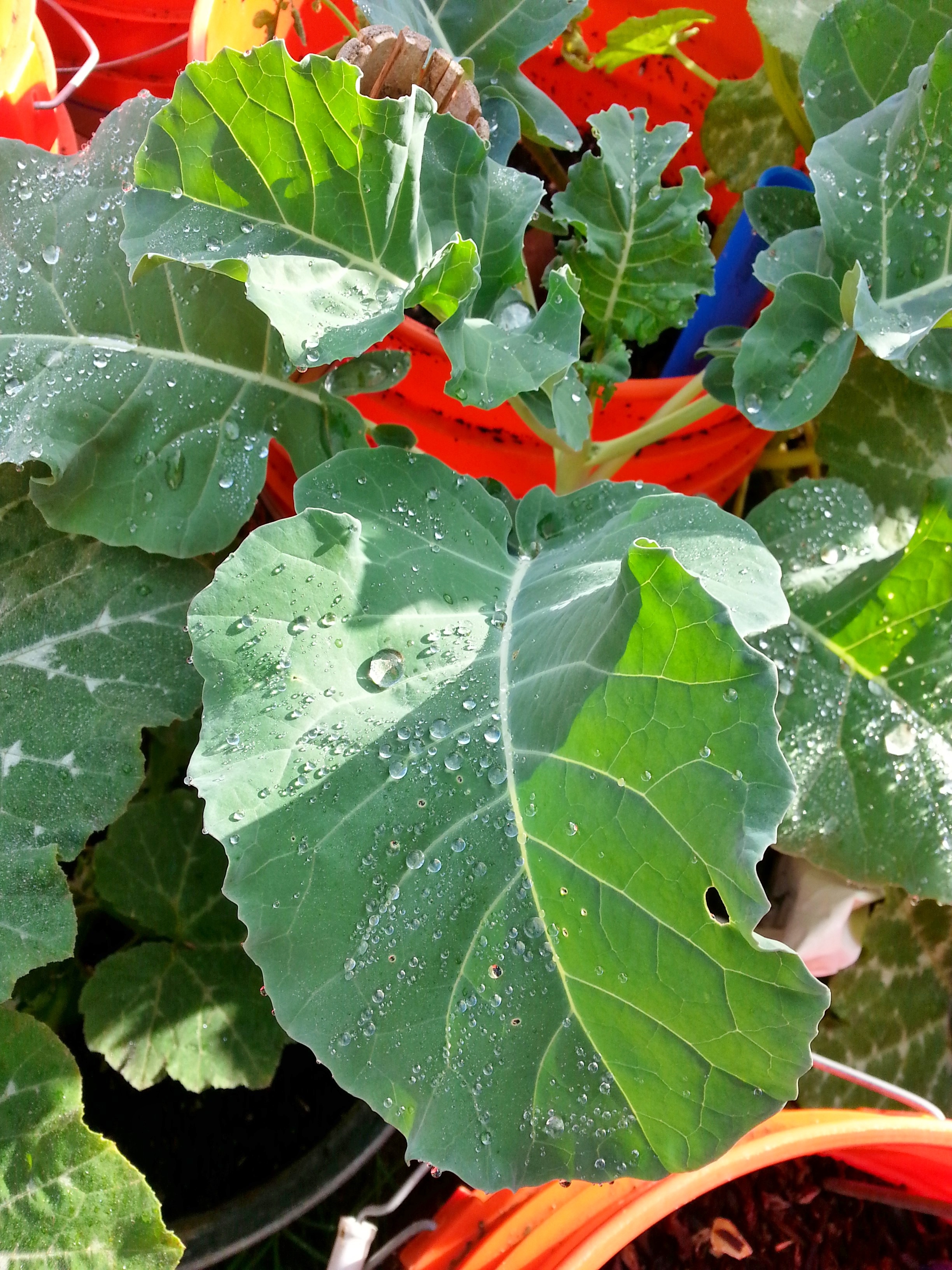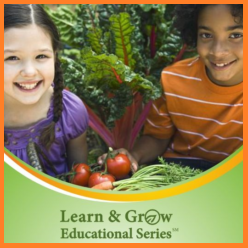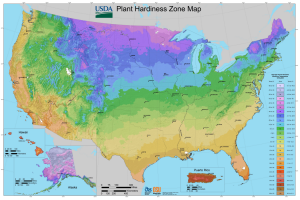 Once you have determined how many containers will go into your garden, you will have to figure out what to plant in each one. In truth, you need to already have an idea of what you want to plant when planning where your containers will go, as each type of fruit and vegetable plant will have its own lighting requirements.
Once you have determined how many containers will go into your garden, you will have to figure out what to plant in each one. In truth, you need to already have an idea of what you want to plant when planning where your containers will go, as each type of fruit and vegetable plant will have its own lighting requirements.
The analysis of which plants to include in your garden depends in part on where you live and the time of year it is. KPS4Parents has the advantage of a year-round growing season, being headquartered in Southern California, so we have the chance to experiment with gardening strategies throughout the year. You may not have that luxury, but can still grow at least some of your own food throughout much of the year with proper planning.
Think first of the vegetables you most frequently buy in the store. What fresh vegetables do you already cook in your family and what do you want to add?
Use the USDA Hardiness Zone Finder to determine which zone you live in, first. Once you have an idea of the foods you want to grow, look at the growing guides for each type of plant on SeedsNow.com and figure out what time of year each fruit or vegetable can be grown in your zone.
If you have a small area in which to grow, try to grow the foods you want the most in shifts over consecutive growing seasons. If you live in colder and/or more temperate climates, you may have to grow indoors or in a greenhouse during the winters, or let your garden go until the next spring. There’s no set schedule for what to grow when on a large scale. It goes zone by zone, and plant by plant.
It’s worth taking the time to do your homework when you first start your garden and figuring out what grows the best and what time of year before you start planting things. Bear in mind, also, that each type of plant grows at a different rate than the others. Some will bear food sooner than others. Some will last long enough to produce again, depending on the types of plants. Tomatoes can thrive for a good two years in a climate with a year-round growing season, allowing you to harvest hundreds of fruits during that time, but once you harvest a carrot, it’s done.
You can find seeds and growing information for each type of plant at SeedsNow.com. Use their convenient look-up tools to search for plants that grow well in containers.
 Use the SeedsNow.com site as a research tool. If you do end up buying seeds from them following our links, a portion of the proceeds from your transaction will be given back to us to help cover the costs of our Learn & Grow Educational Series.
Use the SeedsNow.com site as a research tool. If you do end up buying seeds from them following our links, a portion of the proceeds from your transaction will be given back to us to help cover the costs of our Learn & Grow Educational Series.
Use your zone and the SeedsNow.com information to research when the best time of year is for each preferred fruit or vegetable to grow. Determine the ideal growing conditions for each type of fruit and/or vegetable you want to grow and how many of each plant you would need to produce a reasonable enough yield. You can do a quick internet search to find much of this information. There are many excellent gardening websites, blogs, and social media sources for home gardeners, including container gardening specifically.
Obviously, as the responsible adult(s) who are coordinating this project, you have your own homework to do so that you can create the most beneficial learning experience for your concrete learner possible. Once your research is done, however, the fun of sharing your knowledge of what to grow in your garden with your learner begins!
 If you and your learner followed our strategy using 1-foot-by-1-foot paper squares and hourly snapshots of your space throughout a day to track the movement of the light in your space, then you have the images of the light as it moves through the space to view. Review the images in sequence with your learner and figure out how many hours of light each square gets per day. Either number the squares and keep a corresponding numbered list of hours of daylight or write the number of hours on each square where it sits in your growing space.
If you and your learner followed our strategy using 1-foot-by-1-foot paper squares and hourly snapshots of your space throughout a day to track the movement of the light in your space, then you have the images of the light as it moves through the space to view. Review the images in sequence with your learner and figure out how many hours of light each square gets per day. Either number the squares and keep a corresponding numbered list of hours of daylight or write the number of hours on each square where it sits in your growing space.
Next, review with your learner the different vegetables that you can grow during the current growing season, or the next growing season if you live in a cold climate and it’s currently winter. That said, you can always start self-watering containers indoors with grow lights in the winter and move them outdoors once the weather warms up, if you time things correctly. For that matter, you can raise an entire winter crop indoors with grow lights, if you want.
Just correspond your planting to your environmental requirements, which must take into account temperature and, if outdoors, weather conditions. You will have already researched the lighting and nutritional requirements of each type of plant you can grow in your space, so put the lighting information in front of your concrete learner. If tomatoes need at least 6 hours of direct light per day, on average, which squares receive at least 6 hours per day of light? If lettuce can handle partial shade, which squares in your space get 1-3 hours of direct light per day or dappled light throughout the day?
 Compare with your learner your lighting research data against the number of hours of light per day each of the squares in your space receives to match plants to containers. You will find that many plants share similar lighting requirements, which suggests that you can put them together to create polyculture containers. Polyculture helps discourage species-specific diseases and pests, which prefer plants of choice clustered together like a huge buffet to having them scattered among other plants here and there, which requires chance infection or searching them out.
Compare with your learner your lighting research data against the number of hours of light per day each of the squares in your space receives to match plants to containers. You will find that many plants share similar lighting requirements, which suggests that you can put them together to create polyculture containers. Polyculture helps discourage species-specific diseases and pests, which prefer plants of choice clustered together like a huge buffet to having them scattered among other plants here and there, which requires chance infection or searching them out.
If you are considering polyculture containers, your next step will be to compare the soil requirements for each type of plant that shares similar lighting requirements. Tomatoes and peppers share similar soil requirements, so planting them together can be productive. Many farmers will run pole beans up their corn stalks in order to grow two crops in the same space, and you can repeat that process in your self-watering bucket containers so long as you use dwarf varieties of corn or varieties that are otherwise known to have relatively shallow roots.
You will need to periodically fertilize the plants in your self-watering bucket containers, as well. This may require unique combinations of nutrients relative to the types of plants that are growing within each.
If you are also making your own compost, you can use it to fertilize your containers when you first establish them and when you change them over between plantings. You can also create compost tea by running water through your composter and capturing the run-off, which you can then pour into the reservoirs of your self-watering containers through the refill pipes or dilute with water and pour around the bases of your plants on top of the soil.
Once you and your learner have figured out which plants you can put in which containers for the season, your next step is deciding whether to buy young plants that are already established or whether to start your plants from seeds. If you purchase established plants, then you can start your self-watering container garden right away. If you decide to start from seeds, you can wait until your seedlings are well-established and then build out your garden and plant it at once.
Consider making the planting of your baby plants in your containers a group activity for your concrete learners with his/her peers. Host a gardening party and invite over peers to help in planting the baby plants in your containers. Consider, as a party favor, supplying the pre-cut materials to build out one self-watering bucket container, fill it with nourished soil, and plant it with baby plants for each of your learner’s party guests to take home (have them wait until they get home to fill the reservoirs with water or they could have a huge mess in the car on the way home).
For children, this could be set up as a play date or a birthday party activity. For adults still functioning at the concrete level, a more age-appropriate garden party that includes refreshments or even a barbeque may be more in order. Always seek opportunities for your concrete learner to explain his/her knowledge to others as it will reinforce his/her own learning and foster more complex conceptualization skills. It will also help foster pragmatic language/social skills development.

